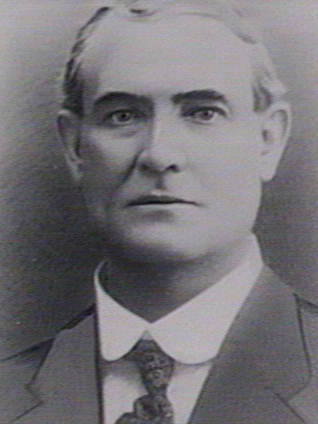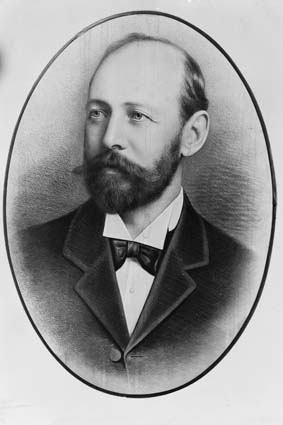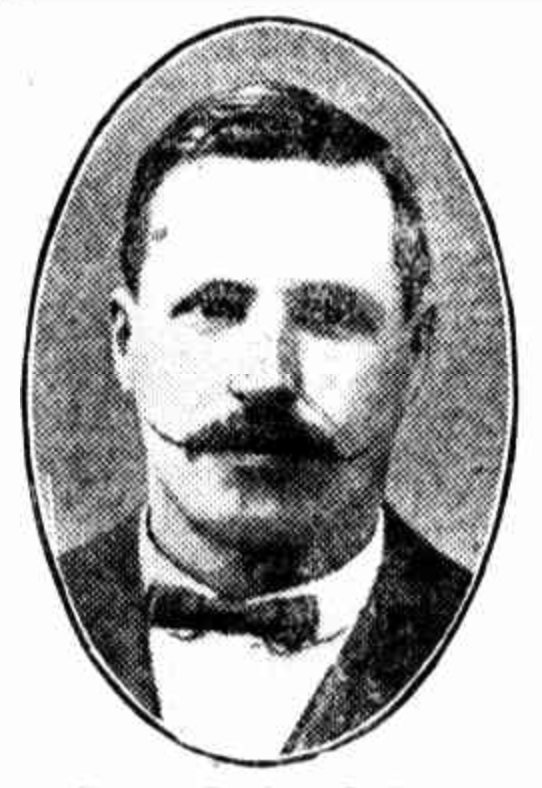|
Candidates Of The 1925 New South Wales State Election
This is a list of candidates for the 1925 New South Wales state election. The election was held on 30 May 1925. The election was the last of three conducted under the system of proportional representation. Retiring Members Nationalist * Arthur Cocks ( North Shore) * Arthur Grimm ( Murrumbidgee) * Thomas Ley ( St George) — retired to contest Barton at the 1925 federal election * Edward Loxton (Ryde) * George Nesbitt (Byron) * Charles Oakes (Eastern Suburbs) * Reginald Weaver ( North Shore) * James Wilson ( Western Suburbs) Progressive * Thomas Rutledge (Goulburn) Others * John Bailey (Independent, Goulburn) — had been expelled from the Labor Party Legislative Assembly Sitting members are shown in bold text. Successful parties are highlighted in the relevant colour. Successful candidates are indicated by an asterisk (*). See also * Members of the New South Wales Legislative Assembly, 1925–1927 References * {{cite web , author-link=Antony Green , last=Green ... [...More Info...] [...Related Items...] OR: [Wikipedia] [Google] [Baidu] |
1925 New South Wales State Election
The 1925 New South Wales state election was held on 30 May 1925. This election was for all of the 90 seats in the 27th New South Wales Legislative Assembly and was conducted in multiple-member constituencies using the Hare Clark single transferable vote. The 26th parliament of New South Wales was dissolved on 18 April 1925 by the Governor, Sir Dudley de Chair, on the advice of the Premier Sir George Fuller. It was a close win for the Labor Party Leader, Jack Lang, which had a majority of just one seat in the Assembly, defeating Fuller's Nationalist/Progressive Coalition. Key dates Results Retiring members Changing seats See also * Candidates of the 1925 New South Wales state election * Members of the New South Wales Legislative Assembly, 1925–1927 Members of the New South Wales Legislative Assembly who served in the 27th parliament of New South Wales held their seats from 1925 to 1927. They were elected at the 1925 state election on 30 May 1925. T ... [...More Info...] [...Related Items...] OR: [Wikipedia] [Google] [Baidu] |
James Wilson (New South Wales Politician, Born 1865)
James Wilson (6 December 1865 – 14 April 1927) was a New Zealand-born Australian politician. He was born at Akaroa to shipwright John Newbegin Wilson and Marjorie, ''née'' Bow. He was educated locally and raised on a farm, marrying Jeannie Geraty on 3 December 1888 at Christchurch, with whom he had six children. He spent seventeen years from about 1885 in the Salvation Army and was appointed in charge of the Melbourne training home. Around 1902 he returned to Auckland and edited the ''Christian Worker'', becoming a Methodist minister in 1903. He returned to New South Wales in 1913 and in 1914 went on a lecturing tour around the United Kingdom. He was a chaplain to the armed forces and saw action from 1916 to 1917, when he was invalided home. In 1920 he resigned the ministry and was elected to the New South Wales Legislative Assembly as a Progressive member for Western Suburbs. A coalitionist Progressive, he had joined the Nationalist Party by 1922. He left the Assembly i ... [...More Info...] [...Related Items...] OR: [Wikipedia] [Google] [Baidu] |
Stanley Cole (politician)
Stanley Llewellyn Cole (29 March 1860 – 17 November 1942) was an Australian politician. Born in Gardiner, Victoria, to gardener George Cole and Emma Lewis Leek, he came to Sydney around 1878 and worked as a carrier, founding S. L. Cole & Son in 1883. On 29 March 1883 he married Isabella Jane Moorley, with whom he had five children. He served as an alderman of Glebe from 1902 to 1925 (mayor 1908–10, 1915, 1921–23), and as a Sydney City alderman from 1924 to 1927. From 1922 to 1924 he was President of the Local Government Association, having served as President of the Master Carriers' Association from 1921 to 1922. In 1927 Cole was appointed to the New South Wales Legislative Council as a Nationalist, serving until 1934 (later as a member of the United Australia Party The United Australia Party (UAP) was an Australian political party that was founded in 1931 and dissolved in 1945. The party won four federal elections in that time, usually governing in coa ... [...More Info...] [...Related Items...] OR: [Wikipedia] [Google] [Baidu] |
Robert Stuart-Robertson
Robert James Stuart-Robertson (16 September 1866 – 2 June 1933) was an Australian politician. He was a member of the New South Wales Legislative Assembly from 1907 until his death and was the Minister for Public Health for 4 months in 1927. He was a member of the Labor Party. Biography Stuart-Robertson was born in Booligal and was the son of Robert John Stuart Robertson, a self-proclaimed doctor, and Catherine Eleanor JOYCE. Stuart-Robertson's birth date has been claimed as 10 August 1874, however the date of 16 September 1866 is evidenced by his official birth record. He was educated to elementary level at Bourke, where his family moved after his father's alleged death when Stuart-Robertson was 4 years old. Despite the rumour that Robert senior had died during the 1870s in Queensland, Robert senior died on 3 July 1899 at George Street Asylum, Parramatta, New South Wales. Stuart-Robertson undertook a number of unsuccessful retail businesses in Bourke and Cobar. During this ... [...More Info...] [...Related Items...] OR: [Wikipedia] [Google] [Baidu] |
John Quirk (politician)
John Quirk (18 May 1870 – 13 December 1938) was an Australian politician. Quirk was born at Balmain in Sydney to dairyman John Quirk and Margaret, ''née'' McClapperty. After attending St Joseph's School in Rozelle, he joined the Postmaster-General's department in 1886 and began a long-running position at the Balmain post-office. In 1889 he married Sarah Gaillie in Sydney, with whom he had five children. A founder of the Letter Carriers' Union (which became the Postal Workers' Union), he was also a founding member of the Rozelle Labor League in 1893. In 1917 he was elected to the New South Wales Legislative Assembly as the Labor member for Rozelle. With the introduction of proportional representation Proportional representation (PR) refers to a type of electoral system under which subgroups of an electorate are reflected proportionately in the elected body. The concept applies mainly to geographical (e.g. states, regions) and political divis ... he became a member for ... [...More Info...] [...Related Items...] OR: [Wikipedia] [Google] [Baidu] |
Tom Keegan (politician)
Thomas Michael Keegan (29 May 1878 – 14 September 1937) was an Australian politician. Born in Ararat, Victoria to miner John Walter Keegan and Mary Flood, he attended primary schools before becoming a miner at Wyalong. Active in the miners' union and the Labor Party, he moved to Sydney around 1901. Around 1902 he married Marie Hallan, with whom he had three children; he would remarry Doris Martin around 1927. In 1910 he was elected to the New South Wales Legislative Assembly as the Labor member for the Glebe. Keegan was elected president of the Glebe Rugby League Club, a position he would remain in until 1920. Keegan was defeated in the election of 1920 after the introduction of proportional representation but returned to the Assembly on 18 October 1921 as the only unsuccessful Labor candidate at the 1920 election for Balmain, filling the casual vacancy caused by the death of the Premier John Storey. When proportional representation was abandoned in 1927 he returned ... [...More Info...] [...Related Items...] OR: [Wikipedia] [Google] [Baidu] |
Kate Dwyer
Catherine Winifred "Kate" Dwyer (; 13 June 1861 – 3 February 1949) was an Australian educator, suffragist, and labour activist. Life Dwyer née Golding was born at Tambaroora, Wellington County, New South Wales to Joseph Golding (died 1890), a gold-miner from Galway, Ireland, and his Scottish wife, Ann (died 1906; née Fraser). She was educated at Hill End Public School. In 1880 she began teaching at Tambaroora Public School, she taught at numerous public primary school in New South Wales until she married fellow school teacher Michael Dwyer in 1887. From 1894 they lived in Sydney where Kate became a member of the Womanhood Suffrage League of New South Wales, her sisters, Annie Mackenzie Golding, Annie and Belle were also members. She was a founder of the Women's Progressive Association in 1901, the organisation promoted the entry of women into legal professions and equal benefits for women following divorce. Interested in women's working conditions she also founded t ... [...More Info...] [...Related Items...] OR: [Wikipedia] [Google] [Baidu] |
Electoral District Of Balmain
Balmain is an electoral district of the Legislative Assembly of the Australian state of New South Wales in Sydney's Inner West. It is currently represented by Jamie Parker of the Greens New South Wales. Balmain includes the suburbs and localities of Annandale, Balmain, Balmain East, Birchgrove, Forest Lodge, Glebe, Glebe Island, Leichhardt, Lilyfield, Rozelle, White Bay and parts of Camperdown and Ultimo. History Balmain was established in 1880 and from 1882, it elected two members, from 1885 it elected three members and from 1889 until 1894 it elected four members simultaneously. Voters cast a vote for each vacancy and the leading candidates were elected. In 1894 it was split into Balmain North, Balmain South, Annandale and Leichhardt, each electing one member. In 1904 with the downsizing of the Assembly after Federation, Balmain North and part of Balmain South were combined into a single electorate, electing one member. In 1920, parts of the electoral distr ... [...More Info...] [...Related Items...] OR: [Wikipedia] [Google] [Baidu] |
Progressive Party (1920)
The Progressive Party of New South Wales was a New South Wales political party that operated between 1920 and 1927, achieving representation in the Legislative Assembly due to proportional representation. It was not a direct successor to the earlier Progressive Party that had operated in the state between 1901 and 1907 but did include members of the former party including George Briner and Walter Bennett. The party attracted support from conservative voters in both rural and urban NSW. As a result, its policies were socially conservative but had elements of agrarian socialism. At the 1920 election it won 15 seats. In December 1921, the party split over the question of support for the first government of Nationalist Party politician George Fuller. An urban wing, led by Thomas Ley and Walter Wearne, agreed to enter Fuller's coalition, but a rural wing ("The True Blues"), led by Michael Bruxner and Ernest Buttenshaw Ernest Albert Buttenshaw (23 May 187626 June 1950) was an ... [...More Info...] [...Related Items...] OR: [Wikipedia] [Google] [Baidu] |
Nationalist Party (Australia)
The Nationalist Party, also known as the National Party, was an Australian political party. It was formed on 17 February 1917 from a merger between the Commonwealth Liberal Party and the National Labor Party, the latter formed by Prime Minister Billy Hughes and his supporters after the 1916 Labor Party split over World War I conscription. The Nationalist Party was in government (from 1923 in coalition with the Country Party) until electoral defeat in 1929. From that time it was the main opposition to the Labor Party until it merged with pro-Joseph Lyons Labor defectors to form the United Australia Party (UAP) in 1931. The party is a direct ancestor of the Liberal Party of Australia, the main centre-right party in Australia. History In October 1915 the Australian Prime Minister, Andrew Fisher of the Australian Labor Party, retired; Billy Hughes was chosen unanimously by the Labor caucus to succeed him. Hughes was a strong supporter of Australia's participation in World War ... [...More Info...] [...Related Items...] OR: [Wikipedia] [Google] [Baidu] |
Australian Labor Party (New South Wales Branch)
The Australian Labor Party (New South Wales Branch), also known as NSW Labor, is the New South Wales branch of the Australian Labor Party. The parliamentary leader is elected from and by the members of the party caucus, comprising all party members in the Legislative Assembly and Legislative Council. The party factions have a strong influence on the election of the leader. The leader's position is dependent on the continuing support of the caucus (and party factions) and the leader may be deposed by failing to win a vote of confidence of parliamentary members. By convention, the premier sits in the Legislative Assembly, and is the leader of the party controlling a majority in that house. The party leader also typically is a member of the Assembly, though this is not a strict party constitutional requirement. Barrie Unsworth, for example, was elected party leader while a member of the Legislative Council. He then transferred to the Assembly by winning a seat at a by-election. W ... [...More Info...] [...Related Items...] OR: [Wikipedia] [Google] [Baidu] |
John Bailey (New South Wales Politician)
John Bailey (14 June 1871 – 26 October 1947) was an Australian politician. Born in Manus Creek to farmer Thomas Henry Bailey and Rosanna Rielly Boyd, he left school early to work with his father as a shearer. On 29 November 1891 he married Esther Elphick at Tumut, with whom he had four children. He became an organiser with the Australian Workers' Union (AWU) in 1901, becoming federation vice-president and central branch president from 1914 to 1924. In 1918 he was elected to the New South Wales Legislative Assembly in a by-election for the seat of Monaro, representing the Labor Party; following the introduction of proportional representation in 1920 he was one of the members for Goulburn. He held the seat at the 1922 election. In 1924 Bailey was expelled from the Labor Party in connection with a ballot box scandal. He saw out the remainder of his term as an independent Independent or Independents may refer to: Arts, entertainment, and media Artist groups * Independent ... [...More Info...] [...Related Items...] OR: [Wikipedia] [Google] [Baidu] |
.jpg)






